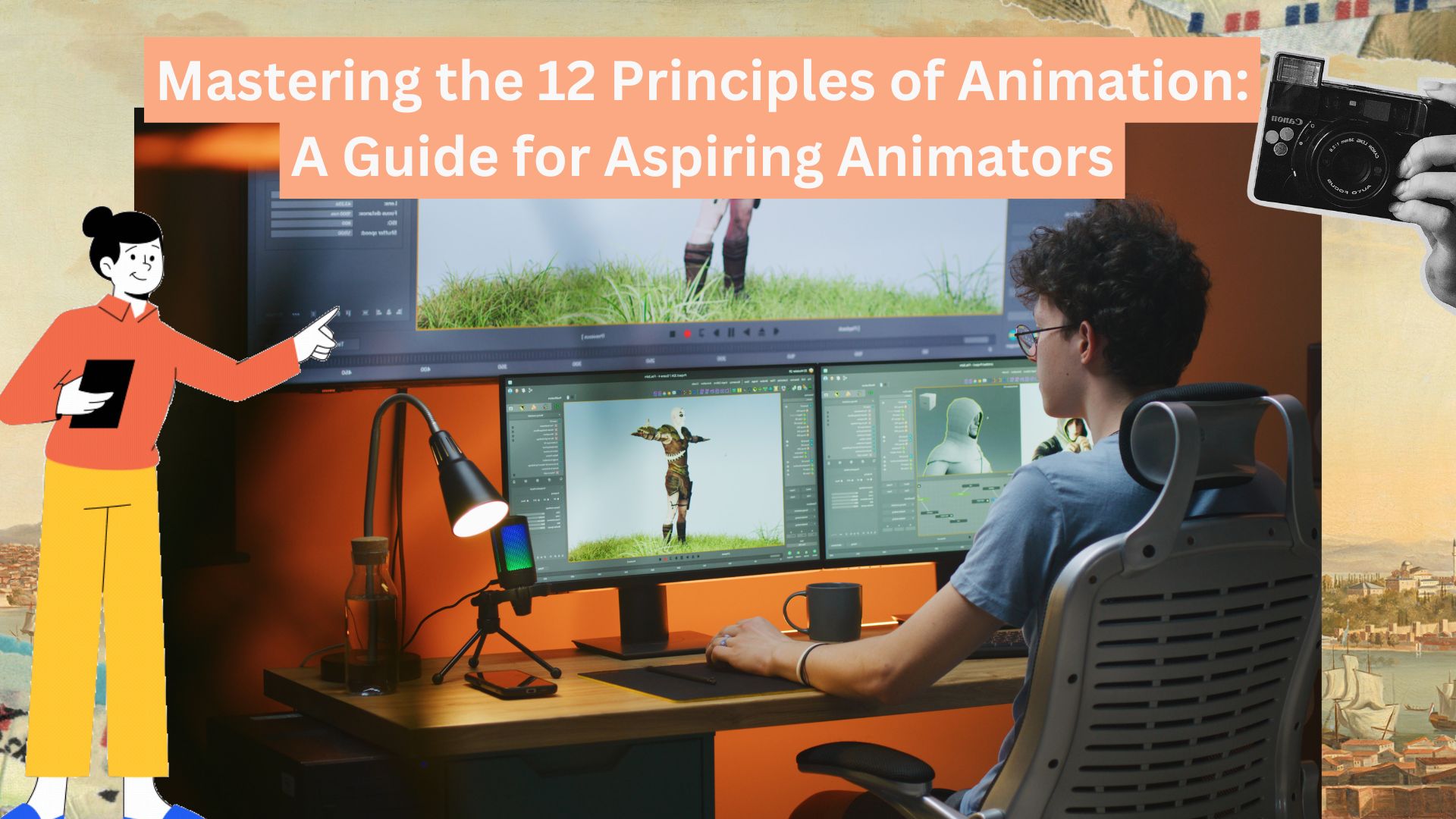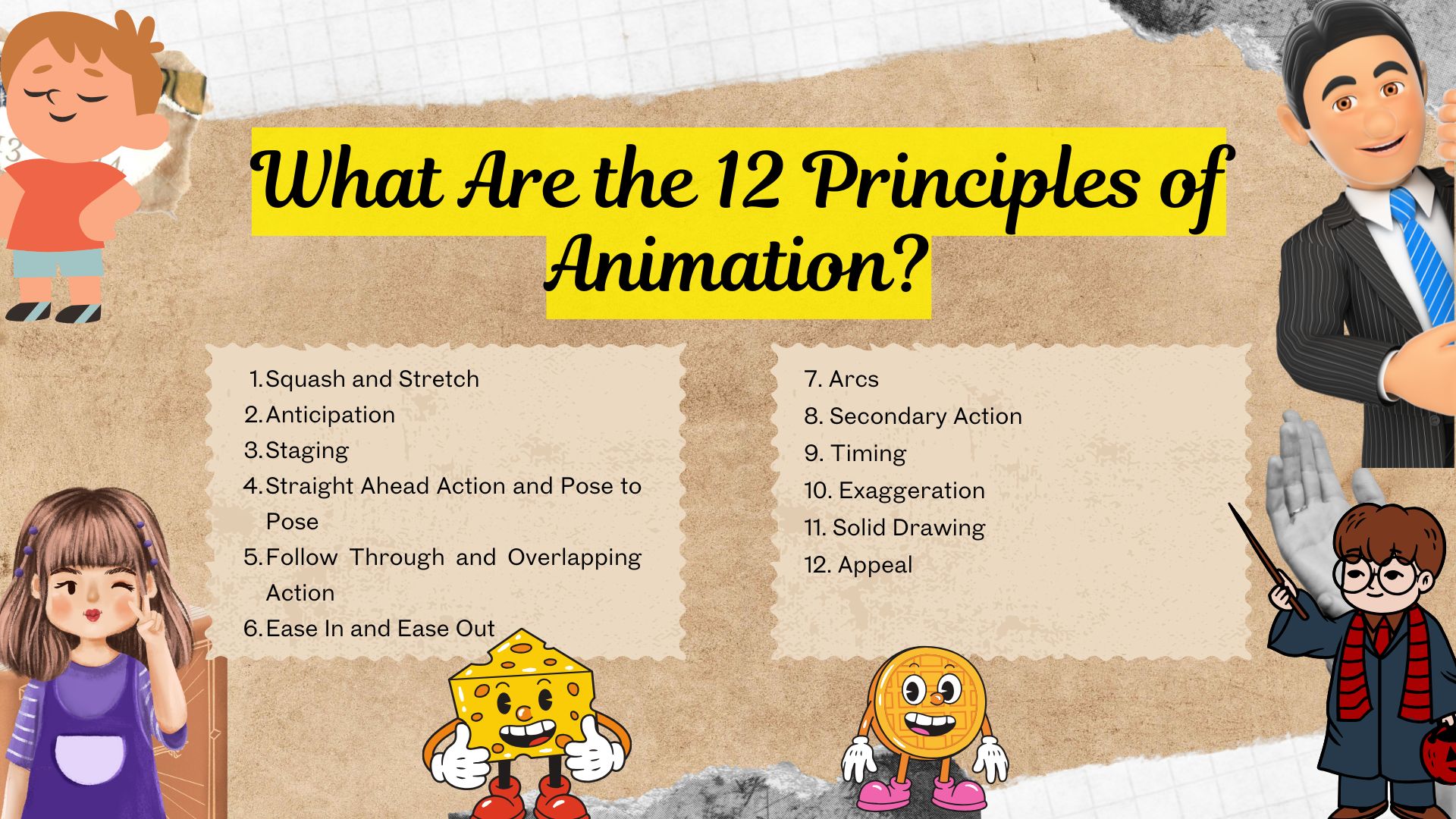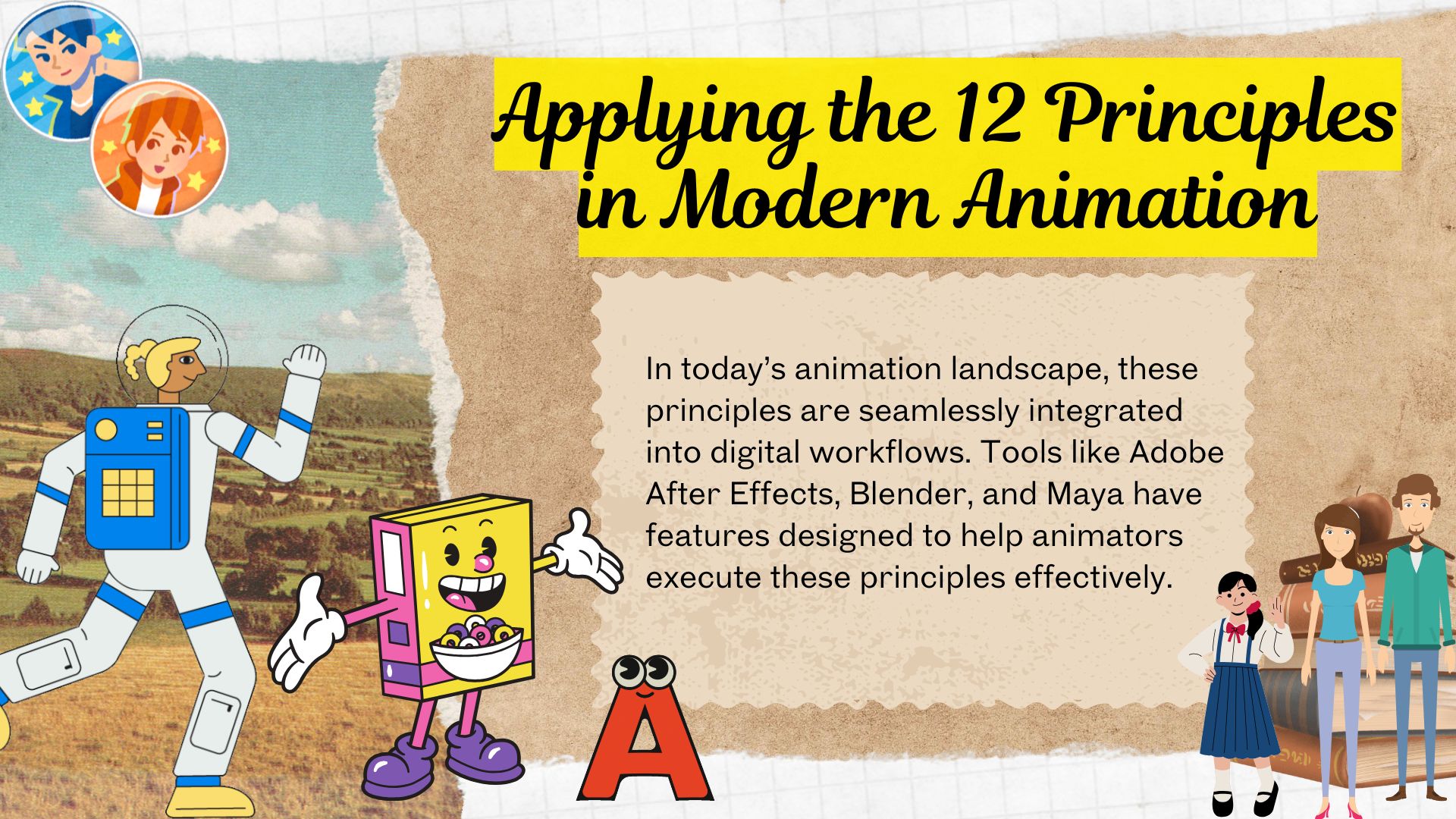
Introduction
Animation breathes life into static visuals, transforming them into dynamic, engaging stories. At the core of every compelling animation lie the “12 Principles of Animation,” a set of foundational guidelines crafted by Disney legends Ollie Johnston and Frank Thomas. These principles, developed during the golden age of animation, continue to shape modern digital storytelling. Whether you’re working on 2D, 3D, or even augmented reality projects, understanding these principles is essential for creating animations that captivate audiences.
At ICE N Fire Media, we specialize in mastering these principles to deliver animations that resonate with viewers and elevate brands. Let’s explore these timeless guidelines and their application in today’s digital landscape.
What Are the 12 Principles of Animation?
The 12 Principles of Animation were introduced in the book The Illusion of Life: Disney Animation (1981). These rules were not merely technical; they reflected a philosophy of creating believable and emotionally impactful movements. The principles address elements like physics, emotion, and storytelling to ensure animations feel realistic and engaging.
Despite advancements in technology, these principles remain as relevant as ever. Whether animating for a feature film, a web series, or a social media campaign, mastering these guidelines helps animators craft stories that connect with audiences on a deeper level.
The 12 Principles of Animation Explained

1. Squash and Stretch
This principle defines an object’s weight, volume, and flexibility. For example, when animating a bouncing ball, its shape stretches as it speeds up and squashes when it hits the ground. Squash and stretch add elasticity to animations, making them lively and believable.
2. Anticipation
Anticipation prepares the viewer for an action, enhancing its impact. Before a character jumps, they might crouch to build energy. This principle not only improves the flow but also adds dramatic tension.
3. Staging
Staging ensures that the audience’s focus is directed where it matters most. Clear positioning, lighting, and composition are crucial. For instance, in a 3D animation, careful staging can guide viewers’ eyes to critical moments in a scene.
4. Straight Ahead Action and Pose to Pose
These are two approaches to animation.
- Straight Ahead Action: Creating frame-by-frame from start to finish for fluid, unpredictable movements.
- Pose to Pose: Planning keyframes first and then filling in the transitions, ideal for structured storytelling. Combining both techniques often yields the best results.
5. Follow Through and Overlapping Action
These principles address how different parts of a character or object move at varying speeds. For example, when a dog stops running, its tail might continue to wag slightly. This creates a sense of realism.
6. Ease In and Ease Out
Natural movements don’t start or stop abruptly. Ease in and ease out involve accelerating and decelerating an object’s motion, mimicking real-life dynamics. This principle is vital for creating smooth, natural animations.
7. Arcs
Movements in nature often follow curved paths rather than straight lines. Whether it’s the swing of a character’s arm or the flight of a bird, arcs make animations more lifelike.
8. Secondary Action
Secondary actions support the main movement, adding depth. For example, while a character delivers a speech, subtle hand gestures or facial expressions enrich the performance.
9. Timing
Timing defines the rhythm and pace of an animation. It affects the mood and can make an action feel fast and frantic or slow and dramatic. Proper timing is the backbone of impactful animation.
10. Exaggeration
Exaggeration amplifies actions or expressions to convey emotions effectively. While realism is essential, slightly stretching reality can add excitement and drama.
11. Solid Drawing
Understanding anatomy, weight, and perspective is vital for animators. Solid drawing ensures that characters look consistent and balanced, whether they’re stationary or in motion.
12. Appeal
Characters should be visually engaging and relatable. Appeal is not about making characters attractive but ensuring they resonate emotionally with the audience.
Applying the 12 Principles in Modern Animation

In today’s animation landscape, these principles are seamlessly integrated into digital workflows. Tools like Adobe After Effects, Blender, and Maya have features designed to help animators execute these principles effectively.
Practical Example
Take a character jumping over a hurdle:
- Anticipation: The character bends their knees.
- Squash and Stretch: Their body stretches mid-jump.
- Follow Through: Their clothing and hair continue moving after landing.
- Timing and Arcs: The trajectory follows a natural arc, with smooth acceleration and deceleration.
These principles are equally relevant in 3D animation, virtual reality, and even motion graphics, underscoring their universality.
Animation Trends That Complement the Principles
AI and Machine Learning
AI tools now assist animators in automating repetitive tasks, allowing them to focus on creativity while adhering to the 12 principles.
Virtual Reality (VR) and Augmented Reality (AR)
The principles apply to immersive environments, where natural motion and staging are critical to user experience.
At Ice N Fire Media, we blend traditional animation principles with cutting-edge technology, ensuring each project achieves its full potential.
ICE N Fire Media: Your Animation Partner

At ICE N Fire Media, we understand that mastering the 12 principles is only part of the equation. Combining these principles with advanced tools and creative storytelling ensures our animations stand out.
Case Study: Bringing a Mascot to Life
For a recent project, we created an animated mascot for a brand’s marketing campaign. By:
- Applying squash and stretch to the character’s movements.
- Using exaggeration for comedic effect.
- Ensuring proper timing and staging to keep viewers engaged.
The result was an animation that boosted the brand’s social media engagement by 45%.
Conclusion
Mastering the 12 Principles of Animation is essential for aspiring animators and seasoned professionals alike. These principles not only bring characters and stories to life but also ensure animations resonate with audiences across platforms.
At ICE N Fire Media, we’re passionate about creating animations that inspire and captivate. By combining these timeless principles with modern technology, we deliver projects that elevate brands and engage viewers.
Ready to create animations that captivate and inspire? Contact Ice N Fire Media today and let’s bring your story to life with the magic of the 12 Principles of Animation!

Discover the timeless 12 Principles of Animation, the foundation of captivating storytelling in 2D, 3D, and digital projects. Learn how these principles elevate animations to emotionally resonate with audiences. Explore more with Ice N Fire Media!

